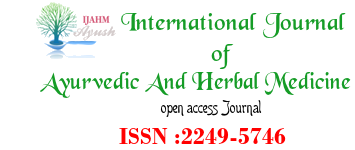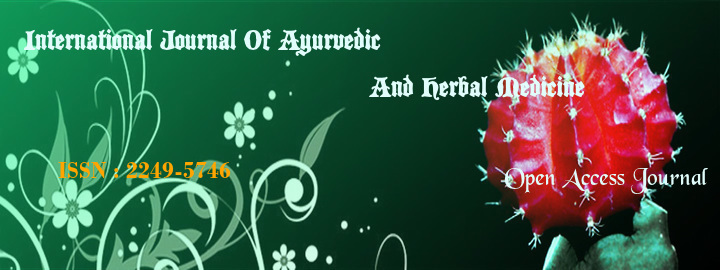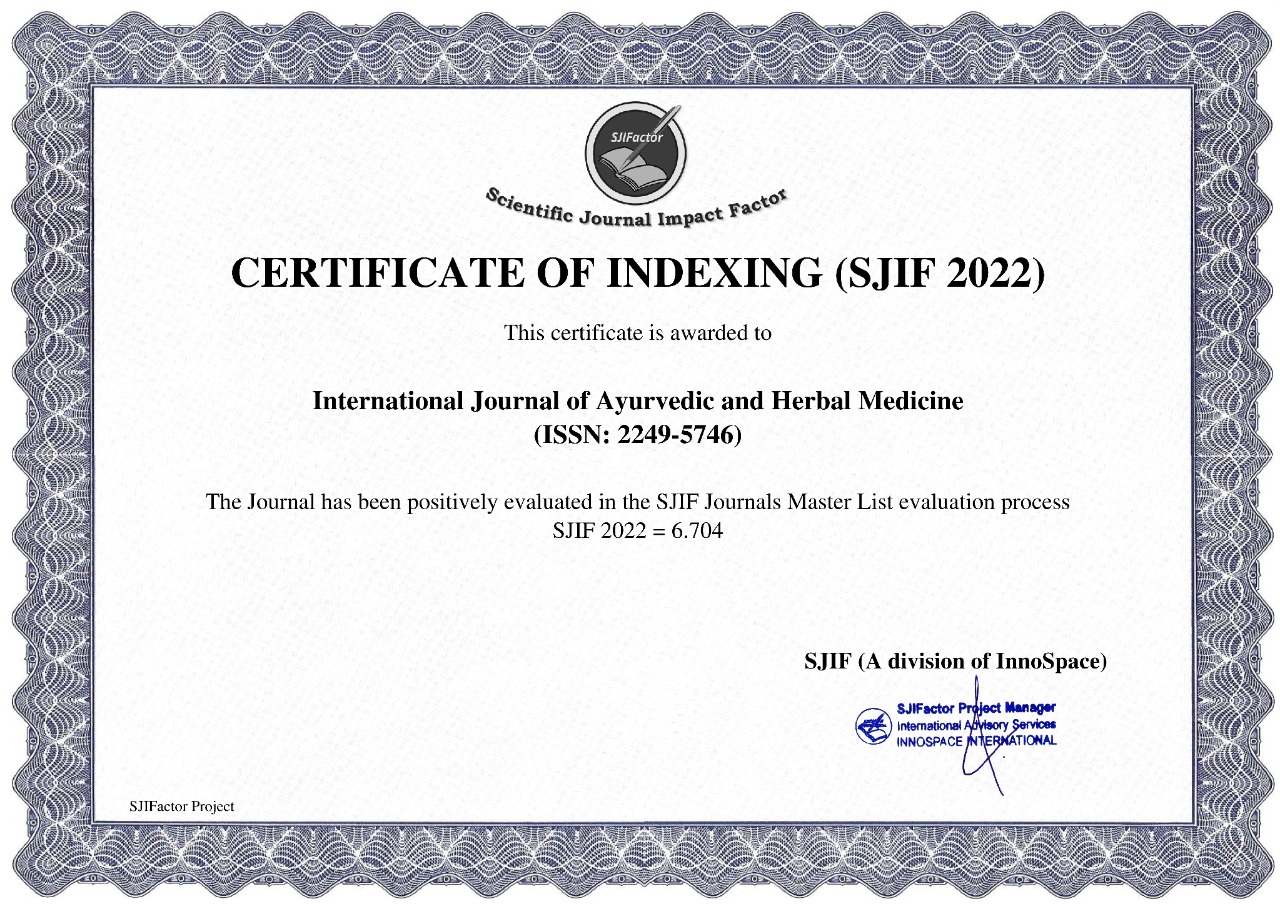


Volume & Issue : Volume 4 Issue 5
|
Rafik U. Shaikh, D. D. Dukare, Kavita. P. Sarwade1, Prakash. P. Sarwade2. Department of Botany, Poona College of Arts, Commerce and Science, Camp, Pune-411 001 E-mail: This email address is being protected from spambots. You need JavaScript enabled to view it. 1.Department of Botany, Shankarrao Patil Mahavidyalaya, Pardi road Bhoom, Dist. Osmanabad. 413 504. (M.S) India.
2. Department of Botany, S.G.R.G. Shinde Mahavidyalaya, Paranda, Dist. Osmanabad. 413 503. (M.S) India. E-mail: ppsarwade This email address is being protected from spambots. You need JavaScript enabled to view it. |
Abstract
Medicinal plants are the basis of traditional medication system of India and other part of the world. The present investigational survey was carried out to report traditional uses of medicinal plants for the treatment of various ailments in different remote villages of Nanded district (Maharashtra). In this survey 74 different plant species of 70 genera belonging to 41 families are reported which are used by these people traditionally in their routine life. Among these species Adhatoda zeylanica, Allium cepa, Allium sativum, Phyllanthus emblica, Ricinus communis, Mentha spicata, Momordica carantia, Ocimum sanctum, Azadirachta indica, Moringa oleifera, Eucalyptus globules, Piper betle, Punica granatum, Citrus aurantifolia, Withania somnifera, Curcuma longa, and Zingiber officinale are commonly cultivated and used as medicine. In addition there are some medicinal plants which are wild and found in the forest region. Thus the present investigation provides an idea for the discovery and development of new drugs.
Key word
Ethanobotany, Medicinal plants, Traditional knowledge, Nanded.
REFERANCES
Anuradha U, Kumbhojkar MS, & Vartak VD, Observations on wild plants used in folk medicine in the rural areas of the Kolhapur district, Ancient Sci of Life, 1986, 6, 119–121.
Chhetri DR, Parajuli P, & Subba GC., Antidiabetic plants used by Sikkim and Darjeeling Himalayan tribes, India, J of Ethnopharmacol, 2005, 99, 199-202.
Cox PA, Nafanua: Saving the Samoan rain forest, (WH Freeman publications, Boston, England), 1997.
Harsha VH, Hebbar SS, Hegde GR, & Shripathi S, Ethnomedical knowledge of plants used by kunabi tribe of Karnataka in India, Fitoterapia, 2002, 73, 281-287.
Hebbar SS, Harsha VH, Shripathi V, & Hegde GR, Ethnomedicine of Dharwad district in Karnataka, Indian plants used in health care, J of Ethnopharmacol, 2004, 94, 261-266.
Jain SK, & Rao RR, A handbook of field and herbarium methods, (Today and tomorrow printers and publishers, New Delhi), 1976.
Kala CP, Ethnomedicinal botany of the Apatani in the Eastern Himalayan region of India, J of Ethnobiol and Ethnomed, 2005, 1, 11.
Laird SA, Biodiversity and Traditional knowledge, equitable partnership in practice, (Earthscan Publ. London (UK) and Sterling, VA, USA), 2002.
Naik VN, Flora of Marathwada Vol. I & II, (Amrut Prakashan, Aurangabad), 1998.
Natarajan B, & Paulsen BS, An Ethnopharmacological study from Thane district, Maharashtra, India: Traditional knowledge compared with modern biological sciences, Pharmaceut Biol, 2000, 38, 138-151.
Perumal Samy R & Ignacimuthu S, Screening of 34 Indian medicinal plants for antibacterial properties, J of Ethnopharmacol, 1998, 62, 173–182.
Perumal Samy R & Ignacimuthu S, Antibacterial activity of some of folklore medicinal plants used by tribals in Western Ghats of India, J of Ethnopharmacol, 2000, 69, 63–71.
Pushpangadan P & Atal CK, Ethno-medico-botanical investigations in Kerala. Some primitive tribals of Western Ghats and their herbal medicine, J of Ethnopharmacol, 1984, 11, 59-77.
Schultes RE, The role of the ethnobotanist in the search for new medicinal plants, Lloydia, 1962, 25, 257-266.
index























